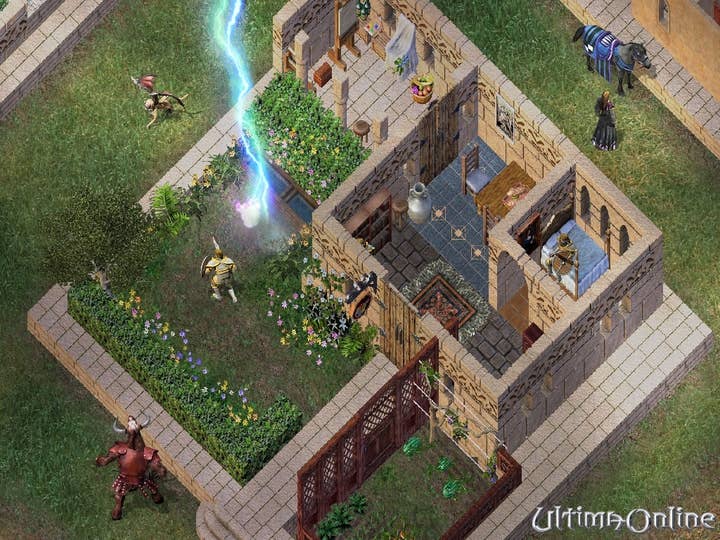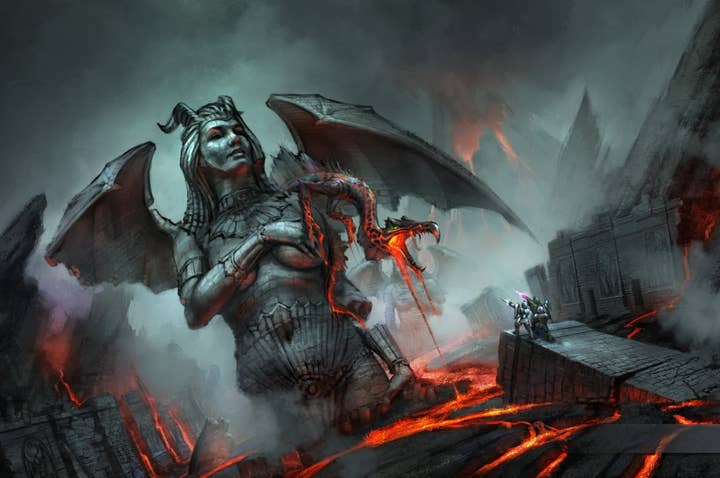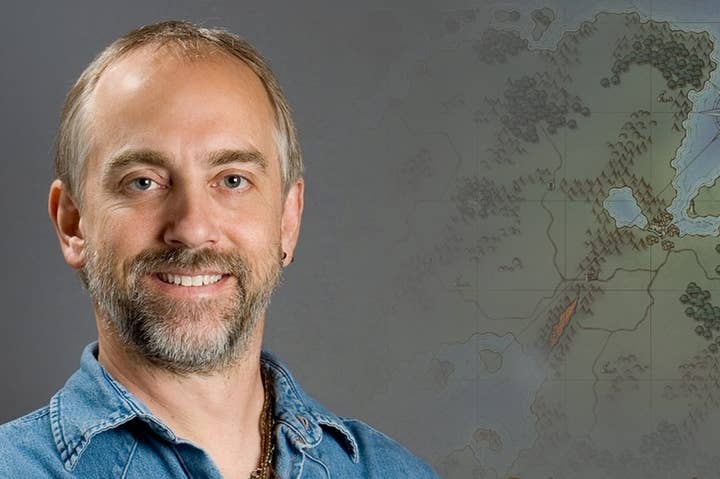Richard Garriott: The power of crowd-sourced development
How Unity Technologies helped the creator of Ultima to regain his mojo
There was a time, not so long ago, when Unity Technologies struggled to find figureheads for its growing community of developers. The sort of august professionals whose long, storied careers could lend this upstart engine some much-needed credence.
The opening keynote of the annual Unite conference is reserved for just such a person, but this year's totemic veteran, Richard Garriott, believes that the tide has now irrevocably turned. Unity can now offer more to a distinguished developer than they could ever provide in return.
"My first game, I wrote in seven weeks of after-school time in high-school, so therefore my costs were close to zero," Garriott says when we meet after his keynote address. "I earned $150,000 in sales, and it's been downhill ever since.
"My first game, I wrote in seven weeks of after-school time in high-school. I earned $150,000 in sales, and it's been downhill ever since"
"The total money has been bigger, but the return on investment has gotten smaller and smaller, and that's been true of the whole games industry: more expensive, more risky, smaller margins."
For anyone who started in the industry at the same time as Garriott - his breakthrough, Ultima I, was released in 1981 - staying anywhere near gaming's cutting-edge became a daunting prospect, heavy with peril and laden with chastening caveats. This is particularly true of the MMO, the genre in which Garriott has diligently worked since he helped to set its foundations with Ultima Online. At some point, he says, what could be achieved and what was required to get there fell hopelessly out of sync.
"You just look at that and you go, 'that's not sustainable.' At any level. It's not sustainable personally, because it's too much work for the emotional reward. It's not sustainable economically, as even a good investment."
For Garriott, Unity is a "watershed moment" not just for his own career, but for the industry at large. Despite existing for less than a decade, Unity Technologies has fashioned a workable solution to the spiralling cost - risk, time, money, you name it - of game development. "Unity has fundamentally changed that paradigm," he says. "The risk and the time and the cost have been going up and up and up, and with Unity that has been reset dramatically."

As evidence, he offers his latest project, the Kickstarter-funded RPG Shroud of the Avatar. Garriott has been working in development for long enough to remember a time when it was necessary to build each game by "brute force" - a small team, a pile of money and a lot of hours. Within 90 days of choosing Unity as the environment in which to build Shroud of the Avatar, Garriott and his team went from nothing to a rough version of the entire game that any of his team could log into and play. In that first few months, they accomplished what Garriott believes would once have taken, "literally years."
And that hasn't always been the case. Garriott was aware of Unity in its earliest, most rudimentary incarnations, and he admits he would have struggled to make the case for the engine over more established - if prohibitively expensive - alternatives as recently as two years ago. Today, however, Unity seems like the best available choice for all but a rarified, dwindling group of AAA studios.
"Unity has fundamentally changed that paradigm. The risk and the time and the cost have been going up and up and up, and that has been reset dramatically"
"If I was trying to be objective to compare to, say, the Unreal Engine or my buddy John Carmack with id Tech, they have trade off 'who's the best renderer?' periodically," he says. "And two years ago I wouldn't have even tried to make the case that Unity was competitive with the number one render pipeline. That doesn't have to be your goal, but you want to be as competitive at that leading edge as you can. It's a problem if you're three steps behind, and there are people who would have argued, two or three years ago, that Unity was two or three steps behind.
"But the stuff they're showing today, running on an iPad, there's nothing deficient about that - at all. It used to be that people would probably choose one of those other engines if their number one goal was rendering. Even before today, if your number one choice was data entry, art flow, asset access, community support, Unity was already the number one by far. I think now you can make the case that there's no longer a consequential difference even on render pipeline."
With the trend line for Unity's growth - both the company and its community - still pointing sharply up and to the right, Garriott can see trouble ahead for its competitors. It is a dominant force in every form of casual gaming, a darling of the indie scene, and a surprisingly prevalent feature in the discussions around what the next generation of consoles will offer.
"Unity has it pretty well covered," Garriott says. "If you're making a first-person shooter, there's reason to consider whether you want to adopt someone else's render pipeline. Your gameplay is so simple that you need to compete on the bells and the whistles. But if you're doing anything deeper, it's more reasonable to just compete on content.
"For the render pipeline only solutions, they're not going to be able to keep pace. They're going to have to make big investments at a time when it's hard to justify big investments."
This idea of "competing on content" rather than presentation is key, because Unity's capabilities in that area will likely always be behind Epic or Crytek. The most realistic and spectacular games on PlayStation 4 and Xbox One will probably be made with a competing engine or proprietary tech, but the gap between the games with the highest production values and those without will not seem quite so wide to consumers in the next generation.
From the perspective of a developer, Unity makes an even more compelling case. For Garriott, any audio-visual deficit pales in comparison to the advantages offered by Unity's vast support-network of developers. This is exemplified by the Asset Store, which has grown from a fanciful concept to a thriving marketplace selling more than 8,000 packages of production tools and assets to more than 400,000 users. The Asset Store's top sellers now make up to $90,000 every month, with 10 per cent of sellers making more than $1,000. For Unity users, sharing content is now both a philosophy and a potentially lucrative revenue stream.
"It's perfectly fine for every game to decide what it wants to do better than anything before, but there's no reason to start with sticks and stones"
And Shroud of the Avatar will be made with no small amount of help from the Asset Store's sellers. The rocks, the trees, the grass, the animals, and many other details of the game's world will be modified versions of models and textures purchased from or freely given by Unity's users. And once Shroud of the Avatar has been released, Garriott will make the improved models available to their original creators.
"We twiddled our thumbs a bit at first," he admits, "but it just seemed inconceivable that people would, A, notice, and B, care. It's perfectly fine for every game to decide what handful of things it wants to do better than they've ever been done before, but there's no reason to start with sticks and stones."
Garriott's initial reticence was tied to decades of working in an industry obsessed with "special sauce," to the point where opportunities to innovate and develop genuinely unique features are lost to time-consuming, humdrum tasks like drawing and modelling yet another set of buildings, or implementing the physics on a character's cloak. With Shroud of the Avatar, the Asset Store shouldered much of that burden, affording Garriott's team more time to experiment with more novel features like its conversation system.

More than anything else, Garriott claims, this crowd-sourcing of effort and assets that will be a catalyst for Unity's evolution. The Asset Store is still only a few years old, but, as with so many phenomena powered by the crowd, it's growth could eventually become self-perpetuating, the curve thundering towards an exponential trajectory.
"If it had not been as broadly adopted by such a sharing community, Unity would not be nearly as powerful. Not nearly," he says. "Everyone is willing to give each other stuff for free, or for truly reasonable prices, then that again multiplies the power of everyone who's working within Unity. To me, that's a unique moment."
"It's a process I've felt very separate from in a very important way for a long time. God, I've missed it, and I think it's critical"
As a journalist, Garriott's evangelism of Unity raises certain alarms. After all, just hours ago he took the stage to deliver the opening address at the company's annual get-together. However, there's an unmistakable sincerity to Garriott that belies any suspicions I might have of corporate alliances. Just as with Peter Molyneux, Brian Fargo and a growing number of veteran developers, Unity has offered Garriott a compromise-free route back to the hands-on development on which his reputation was built.
"If you look at the middle Ultimas and Tabula Rasa and other games I've been a part of, the tools that we build internally are usually only finished to the point where they're as good as you need to be able to finish the product. They're not easy to use, by any means. They're sufficient," he says.
"And so I used very few of the tools myself, because unless you're the designer who's building in that world editor every day it's pretty hard to pick it up and use it casually. You're either the designer, or not a designer, and in all of my early work I was the designer. In my later work I was manager of the designers - one more step removed.
This spring, I was working with my designers on Shroud of the Avatar, giving them feedback. I'd watch them make these changes [in Unity] right in front of me, and we'd run it again instantaneously... After watching them a few times, I didn't even have to take any tutorials. I could then say, 'Get outta the way.' I could do it myself, and I suddenly realised that I'm not out of my design job any more. I can contribute again in the ways I want and need and believe I can add the most value to the process.
"It's a process I've felt very separate from in a very important way for a long time. God, I've missed it, and I think it's critical. Game design is a hard problem, and the management needs to get down there in the weeds to really understand it."









